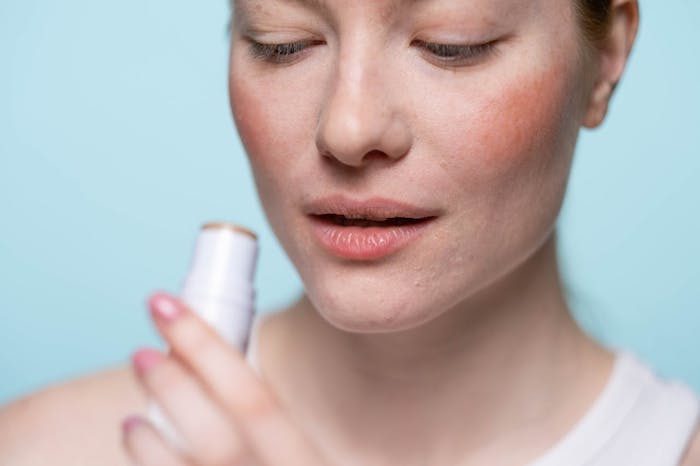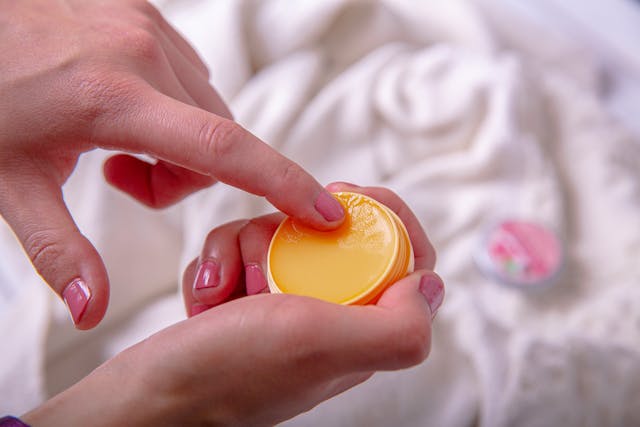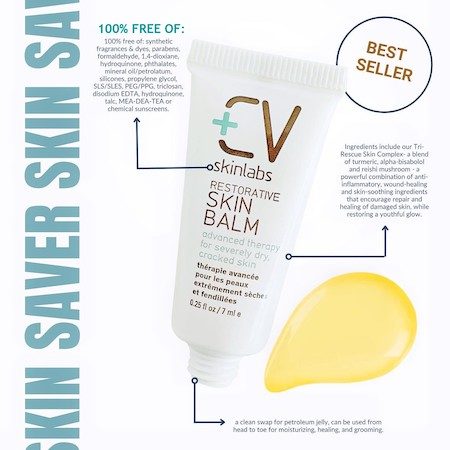
Why worry about clean beauty lip balm?
There are a lot of options out there when it comes to lip balm. It may be hard sometimes to figure out which one is best.
We want to help. Here’s why it’s super important to be careful when shopping for lip balm.
You Need Clean Beauty Lip Balm to Avoid Ingesting Toxins
No matter how careful you are, you’re likely to ingest some of the products you put on your lips. That includes lip balm, as well as lip glosses and lipsticks.
In one small study published in the scientific journal Food and Chemical Toxicology, researchers examined data from 360 women ages 19-65 years who regularly used lip products like lipstick, body lotion, and face cream.
Participants were provided with prototype test products and kept diaries recording detailed daily usage information over two weeks. The researchers noted that lip products were of particular concern because of the higher potential for exposure through ingestion.
Meanwhile, other studies have raised the alarm about toxic ingredients in lip products. In October 2007, the Campaign for Safe Cosmetics tested 33 popular brands of lipstick and reported that 61 percent contained lead, with levels up to 0.65 parts per million, indicating a cause for concern.
Later, a study by the U.S. Food and Drug Administration (FDA) found lead in all tested lipsticks, while other studies found lead and cadmium in some lipstick samples.
These are colored lip products, though. Surely lip balms—which often lack any color or tint—would be safer to ingest?

Is Clean Beauty Lip Balm Really Necessary?
We have fewer tests on lip balms than we have on lipsticks and lip glosses, but consumer demand has resulted in a little more information.
In January 2024, for instance, consumer watchdog Leah Segedie of “Mamavation.com” released a report on PFAS “forever chemicals” in lip balms. After evaluating 20 products, Mamavation’s EPA-certified laboratory “found indications of PFAS” inside the products.
In particular, they found:
- 20 percent of lip balms tested had organic fluorine concentrations above 10 parts per million (ppm)
- 16 percent of the brands had organic fluorine above 10 ppm
Organic fluorine is an indicator of PFAS. PFAS are per- and polyfluoroalkyl chemicals that have been used for decades to make products stain-, oil-, and grease-resistant. They have become pervasive in our environment and are now a concern in a wide range of products. Higher levels of consumption have been linked with health problems like cancer and preeclampsia.
Mamavation.com noted that because lip balms are placed on the lips, they are easily digested and should be considered “as relevant as a food product having indications of PFAS.”
In another study out of the University of Iowa, researchers examined lead content in lip balms highly desirable to young children. They tested 25 lip balms collected from various retail outlets and examined them in the laboratory. They found lead present in all 25 products.
Some of these products were from other countries besides the U.S., and some had warnings on them stating, “use under adult supervision.”
Further Research Suggests Clean Beauty Lip Balm Important!
The “Daily Mail” also reported on a study of lip balms that found toxic ingredients. A French consumer group tested 21 products, including the classic Carmex moisturizing lip balm and Labello original classic care lip balm, along with products from other brands like Garnier, La Roche Posay, and Yves Rocher. All were available in the United Kingdom (UK), with many on sale in the U.S. and Australia as well.
The results showed the following:
- Most of the lip balms contained MOSH (mineral oil saturated hydrocarbons), which can be harmful if swallowed)
- Most of the products contained MOAH (mineral oil aromatic hydrocarbons), which at high exposures, have been associated with an increased risk of cancer
A spokesperson for the United Kingdom’s cosmetic trade association denied the suggestion that the lip balms are harmful.

Clean Beauty Lip Balm: Ingredients to Avoid
These are small studies so far, and we need more research to know more about what is in most of the lip balms on the market. In the meantime, it’s best to be cautious about the products you’re buying and using. Just assume that at least some of that lip balm is going inside of you.
With that in mind, read the ingredient labels and avoid lip balms that include the following:
- Petrolatum (mineral oil): This is another name for mineral oil, which is typically derived from petroleum—the same petroleum as what you put in your car as gasoline. Though these mineral oils are highly refined, they can be drying over time, leading to lip balm addiction.
- BHA and BHT: Manufacturers may use these as preservatives in some lip balms. They are butylated compounds that have been linked to health concerns like hormone disruption.
- Phenol/menthol/salicylic acid: These ingredients give lip balm a tingling effect and may help exfoliate the lips, but they also can irritate and dry the lips.
- Fragrances/flavors: These are made from synthetic chemicals that aren’t listed on the label. Some fragrance chemicals can trigger allergic reactions and even eczema.
- Chemical sunscreens: Though it’s wise to protect your lips from damaging UV rays, most of the sunscreen in lip balms is chemical. Oxybenzone, for instance, has been associated with hormone disruption.
Clean Beauty Lip Balm: What to Look For
While you’re avoiding the ingredients listed above, look for the nourishing and moisturizing ingredients below:
- Natural oils: These are easily absorbed by the lips and are full of essential fatty acids that help plump and moisturize.
- Beeswax: This natural product helps seal in moisture and protect against dryness.
- Triglycerides: These are compounds that combine fatty acids from natural oils with moisturizing glycerin. They protect the outer layer and soften lips.
- Castor oil: Known for its ability to penetrate deeply into the skin, castor oil is rich in fatty acids that help soothe, condition, and heal chapped lips.
- Vitamin E: This vitamin is a natural antioxidant and helps protect the lips from premature aging and UV-ray damage.
You can get all these ingredients and more in our Restorative Skin Balm. It’s made without the petrolatum, dyes, talc, PFAS (per- and polyfluoroalkyl substances), or plasticizers found in some other lip products.
Instead, it contains toxicologist and clinically tested skincare ingredients, oils, and butters that nourish, moisturize, and help heal skin. It’s perfect for chapped lips, and you can multitask with it by applying it to dry skin or cuticles and using it to help heal eczema, cuts, scrapes, and abrasions.
How careful are you when purchasing lip balm?
Featured image by Ron Lach via Pexels.


